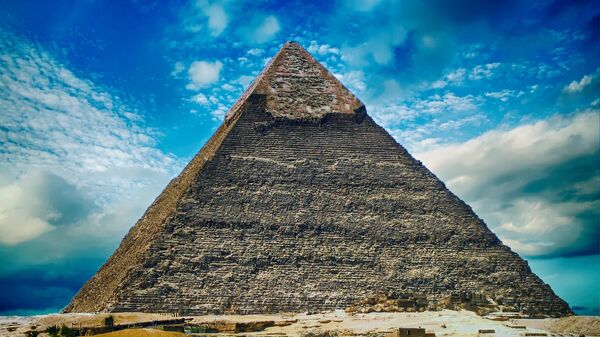The Great Pyramid of Khufu in Giza outside Cairo could be erected on a naturally formed hill much larger than previously believed, it has now been suggested in a recent video on the YouTube channel Ancient Architects.
“The estimations of the volume of the hill that makes the foundations of the Great Pyramid are based on topographic maps and the few physical observations made inside the pyramid but the truth is nobody knows”, Matthew Sibson, a historian and civilisation connoisseur, started the bombshell explanation in the video, before going on to explain that under the Great Pyramid is a 20-metre-high truncated pyramid-shaped hill known as an inselberg which, he suspects, was in fact actually larger in size.
The explanation appears well grounded, as the expert pointed to the Queen’s Chamber, which is estimated to sit far higher than the 20-metre-height of the inselberg.
Sibson pointed out that sand may have been used to infill natural voids within the complex’s rocky structure to give it greater stability. Separately, Sibson drew the public’s attention to the fact that every granite beam in the King’s Chamber appears to be cracked, something which serves as secondary evidence of the inselberg reaching higher than history books suggest.
The Pyramid of Khufu, also known as the Great Pyramid of Giza, is one of the most famous ancient wonders of Egypt.
— SawabCenterEN (@SawabCenterEN) 11 июня 2019 г.
The pyramids are a witness to a rich history and culture that dates back thousands of years.#NationalPride pic.twitter.com/juOT5u8QSo
He also explained how pictures featured in his previous videos show crude pyramid excavation work that could be viewed as digging through natural rock rather than man-made masonry.
“Why does it look like this?" Matthew wondered, coming up with a possible clue: "Is it because the tunnels actually go through natural bedrock?”
Matthew also cites a “strange passage” from ancient Greek historian Herodotus that says the pyramid was built “from the top down” as evidence of his theory.
Great Pyramid, Egypt 🇪🇬 pic.twitter.com/mAtjCNmCuh
— Abdallah Salim🅰️🇪🇬 (@abdallah_00100) 11 июня 2019 г.
Speaking to The Daily Star Online, the historian admitted that he would need to see the interior of the crude tunnels for himself, but said it is possible that the chambers and tunnels inside the Great Pyramid may have simply been excavated from the inselberg, admitting, though, that huge blocks of masonry were also added inside and out to make the pyramid appear the way it does.
It was earlier revealed that Egypt’s iconic Giza pyramids were designed by Imhotep, an architect of one of the most known and influential pharaohs of all time, Pharaoh Djoser, who boasts a flamboyant burial chamber in the ancient architectural complex.



